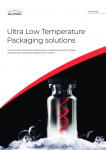Borgas sets out ‘top 8’ pharma industry issues
In a speech delivered at a meeting of the European Fine Chemicals Group (EFCG) recently, Borgas identified eight major challenges facing drugmakers and contract manufacturing organisations (CMOs), along with some pathways to follow to overcome them.
Science, not marketing
Big pharma companies seem to be reining in the imbalance that led the industry to become sales and marketing-led, rather than science-led, in the 1990s. If that is true, then some innovation in the future will also come from universities, which has been a fairly untapped resource by the pharma industry in recent years. And the contribution from emerging countries will accelerate, he said.
Regulators becoming more ‘careful’
Public anger about side effects, litigation arising from safety incidents against industry and regulators have all contributed to a tougher regulatory environment for the pharmaceutical sector. Borgas’ advice is to live with it rather than fight it, while investing in technological solutions such as new quality systems and traceability processes to minimise risk.
More patients
The escalating numbers of patients around the world as new markets open up has a dual effect – higher quantities of drugs sold, but lower prices. Capacities must continue to grow, and business models will have to change, with greater integration of production, formulation, sales and distribution. The answer will not be in generics or iterative drugs, but in both, he said.
Intellectual property
Intellectual property values vary greatly between different countries, and non-governmental organisations (NGOs) are exerting a lot of pressure to make cheap drugs available in less developed countries, regardless of patent status. That clearly conflicts with innovation, said Borgas, and it is important to collaborate with global agencies – particularly patent offices – to clarify and standardise the rules for generics.
Pricing pressures from healthcare payers
Relentless downward pressure on pricing is a constant battle to be fought by pharma, but in fact achieves little other than wearing down the combatants, according to Borgas. It becomes nonsensical when one considers that just 10 per cent of the whole value chain is in the molecule, with the other 90 per cent is in marketing, research profit, distribution etc. Defending the minor part absorbs a disproportionate amount of the industry’s energy, and Borgas’ answer is to play the long game, cutting costs right back through innovation and making those efforts transparent. Deal in 20-year lifecycles, he advised.
New science frontier
Much has been said about the end of the blockbuster model, and that raises questions in turn about the manufacturing model in pharma. The industry’s capabilities are not geared at the shift towards targeted drugs, delivered to smaller, more specific patient groups. In this new scenario manufacturing flexibility becomes as important as scalability, and this can be achieved through aggressive investment in technological innovation, he said.
Production overcapacities
Lonza estimates that the overcapacity in pharmaceutical manufacturing for chemical ingredients is around 60 per cent, and many of those facilities are ageing and inappropriate. The whole industry is fragmented with the top 40 competitors making up 30 per cent of the market, with more than a thousand players making up the remainder. Moreover, biologics capacity looks like it will follow the same ‘sinful path’ as chemicals, said Borgas. Movement into defensible niches – high-potency etc - is a solution for a few players, but consolidation is the likely path. Plants must continue to be closed, and modern plants must be built with greater efficiencies.
Substance quality
Everyone claims to want to have safe drugs, but there are no harmonised regulations, standardised quality systems or auditing approaches around the world, indeed even between the US and Europe. There are 600 Chinese companies involved in fine chemical manufacturing, but only 10 per cent have been inspected by the FDA and are therefore cleared to export into pharma markets, and in that environment cases like the contaminated heparin scandal, and more recently substandard antibodies, can be expected to happen. That questions the outsourcing model as a whole, and that affects CMOs regardless of location, he stressed.
Who will win in this competitive environment, asked Borgas? The answer is neither East, no West, he concluded. It will be the companies that become global first.
“It won’t be a big or a small company, but one that moves fast, and integrates with customers and other business partners,” he said, adding that neither high quality or low cost is the solution, but companies that can offer both aspects and also the flexibility to serve both research-based and generic manufacturers.
Success will come to companies that can set aside their adversarial approach to competitors, and are prepared to optimise processes by working with their rivals on new processes and standards to protect patients and the environment, he concluded.














